Emerald Arborvitae Tree
- June 21, 2023
- 0 comment
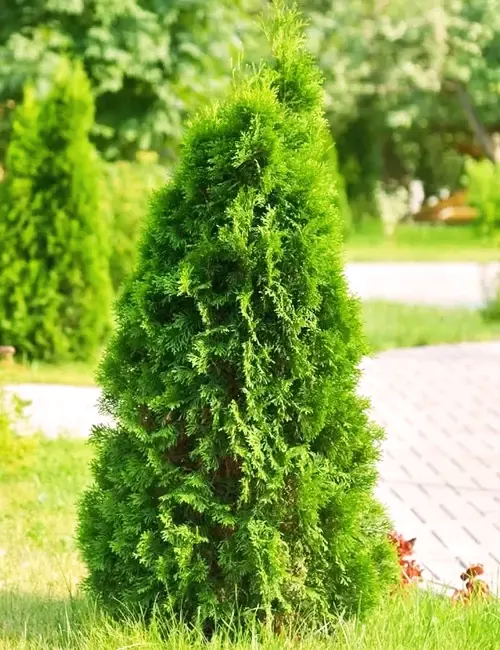
Common Name: Emerald Arborvitae
Botanical Name: Thuja occidentalis ‘Smaragd’
Family: Cupressaceae
Plant Type: Evergreen tree
The Emerald Arborvitae (Thuja occidentalis ‘Smaragd’) is a stunning coniferous tree that adds an elegant touch to any landscape. Known for its vibrant green foliage and upright growth habit, this tree belongs to the cypress family (Cupressaceae) and offers numerous benefits for homeowners and nature enthusiasts alike. In this article, we will explore the various aspects of the Emerald Arborvitae, from its attributes and care requirements to its origin and fascinating facts.
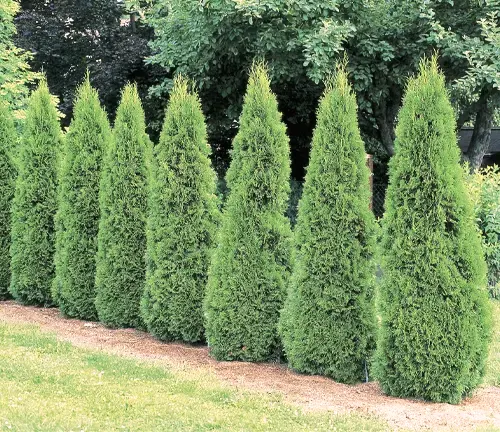
Mature Size and Growth Rate
The Emerald Arborvitae typically reaches a mature height of 10 to 15 feet (3 to 4.5 meters) and spreads about 3 to 4 feet (0.9 to 1.2 meters) wide. With its slow to medium growth rate, it maintains a compact, narrow form, making it ideal for hedges, privacy screens, or as an accent plant.

Soil Type and Preference
This tree thrives in well-drained soil and adapts well to a variety of soil types, including loam, sandy, or clay soils. It prefers a slightly acidic to neutral pH level.
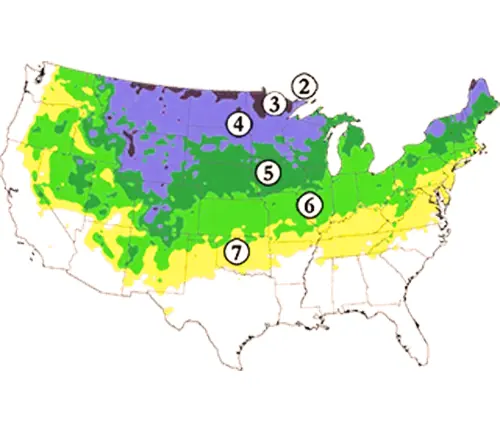
Hardiness Zones
The Emerald Arborvitae is resilient in USDA hardiness zones 2 to 7, making it suitable for various regions across North America.
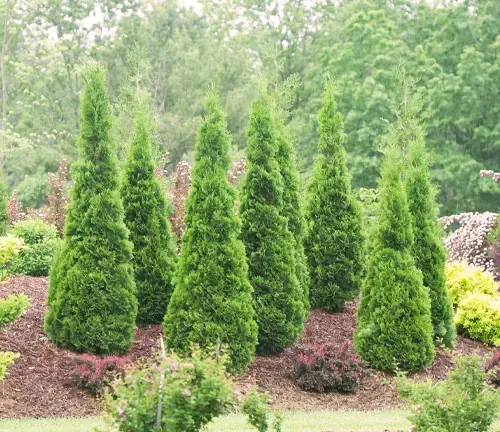
Sun Preference
While the Emerald Arborvitae can tolerate partial shade, it flourishes in full sun. It is best planted in locations with at least six hours of direct sunlight per day.

Attributes and Characteristics
The Emerald Arborvitae features dense, lush foliage that exhibits a vibrant emerald green color all year round. Its scale-like leaves have a soft, feathery texture, providing an attractive display in any season. This tree maintains its elegant shape without requiring much pruning and doesn’t produce cones, which reduces maintenance tasks.
Wildlife Value
The dense foliage of the Emerald Arborvitae offers excellent cover for birds and small mammals. Many bird species, including finches and sparrows, find refuge in its branches, while rabbits and squirrels often seek shelter beneath its dense canopy.

Care
To ensure optimal growth and health, the Emerald Arborvitae requires regular watering during its first year after planting. Once established, it becomes more drought-tolerant but benefits from occasional deep watering during dry periods. Apply a layer of organic mulch around the base of the tree to conserve moisture and suppress weed growth. Prune sparingly, focusing on removing any dead or damaged branches.
Benefits
The Emerald Arborvitae provides numerous benefits to homeowners and the environment. Its dense foliage acts as an effective sound barrier, reducing noise pollution in urban areas. When strategically planted, it can serve as a privacy screen or windbreak, offering tranquility and protection from strong winds. Furthermore, this evergreen tree contributes to air purification by absorbing carbon dioxide and releasing oxygen.
Invasive
The Emerald Arborvitae is not considered invasive. It maintains a compact growth habit, reducing the risk of encroaching on nearby plants or landscapes.
Lifespan
When properly cared for, the Emerald Arborvitae has a lifespan of approximately 50 to 150 years, depending on growing conditions and maintenance practices.
Disadvantage
One potential drawback of the Emerald Arborvitae is its susceptibility to certain diseases and pests, which we will discuss further in the next section.

Edible or Not
The Emerald Arborvitae is not typically cultivated for its edible properties. Its foliage contains certain compounds that are not suitable for human consumption.
Habitat Requirements
This evergreen tree thrives in a variety of habitats, including gardens, parks, and residential landscapes. It prefers well-drained soil and adequate sunlight for optimal growth.
Name Origin
The common name “Arborvitae” is derived from Latin, meaning “Tree of Life.” This name reflects the historical medicinal uses of related species in the genus Thuja. The name “Emerald” refers to the tree’s striking green foliage.
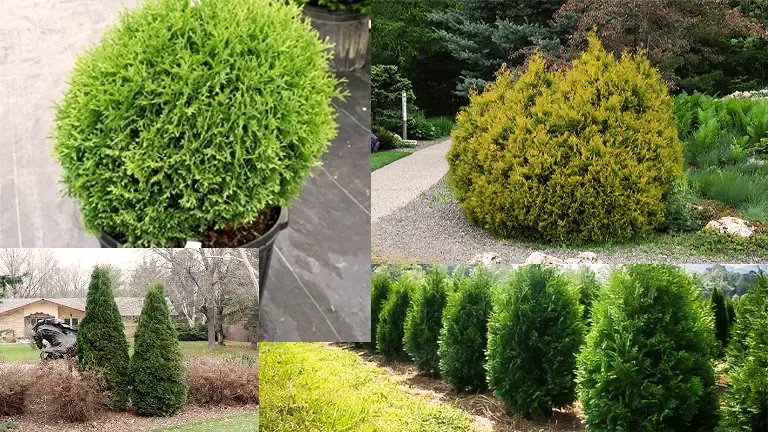
Varieties
Apart from the Emerald Arborvitae, other popular varieties within the Thuja occidentalis species include ‘Hetz Midget,’ ‘Rheingold,’ ‘Holmstrup,’ and ‘Techny.’ Each variety possesses unique characteristics, such as different growth habits, foliage colors, or sizes, allowing for a diverse range of landscaping options.
Pruning
The Emerald Arborvitae requires minimal pruning to maintain its desired shape. Light pruning in early spring or late winter can help remove any dead or damaged branches, ensuring the tree’s overall health and aesthetics.
Propagating
The Emerald Arborvitae can be propagated through various methods, including stem cuttings or grafting. However, it is best left to experienced gardeners or horticulturists due to the specific requirements and techniques involved.
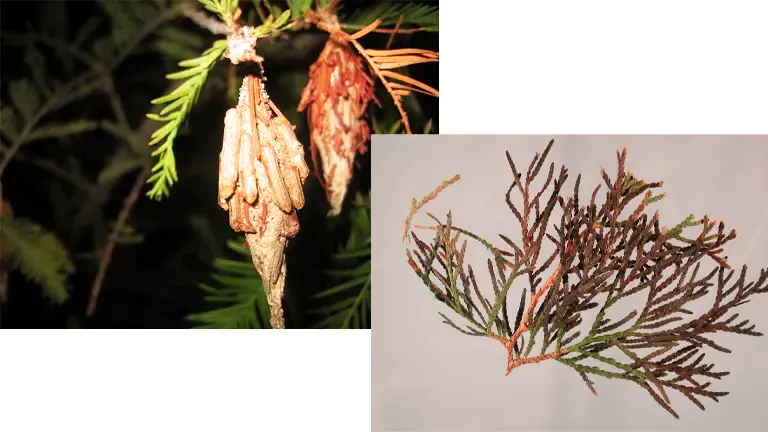
Common Pests & Diseases
While generally hardy, the Emerald Arborvitae may be susceptible to certain pests and diseases. Spider mites, bagworms, and scale insects are potential pests that can infest the tree. Common diseases include cedar apple rust, root rot, and needle blight. Regular inspections and prompt treatment with appropriate remedies can help prevent and manage these issues effectively.
Fun Facts:
- The Emerald Arborvitae is the state tree of Michigan, symbolizing the region’s rich natural heritage.
- Native Americans have historically used various parts of the Thuja genus for medicinal purposes, such as treating respiratory ailments and skin conditions.
- In addition to its aesthetic appeal, the dense foliage of the Emerald Arborvitae also provides excellent wind protection and insulation, reducing heating and cooling costs for nearby buildings.
Frequently Asked Questions:
- Can the Emerald Arborvitae tolerate cold winters?
Yes, this tree is hardy in USDA zones 2 to 7 and can withstand harsh winter conditions. - Does the Emerald Arborvitae require much maintenance?
Compared to many other trees, the Emerald Arborvitae requires minimal maintenance. Regular watering, occasional pruning, and monitoring for pests and diseases are usually sufficient to keep it healthy and vibrant. - Can the Emerald Arborvitae be used as a hedge?
Absolutely! Due to its dense foliage and upright growth habit, the Emerald Arborvitae is an excellent choice for creating a beautiful and functional hedge or privacy screen.
Conclusion: The Emerald Arborvitae is a captivating evergreen tree that adds grace and charm to any landscape. With its vibrant green foliage, compact form, and numerous benefits, it is a popular choice among homeowners and landscape enthusiasts. By understanding its care requirements, appreciating its ecological value, and enjoying its year-round beauty, you can create a harmonious and inviting outdoor space with the Emerald Arborvitae as a centerpiece.



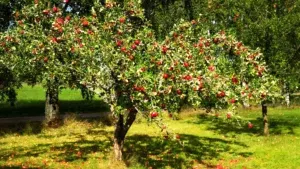

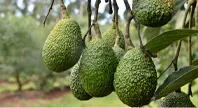

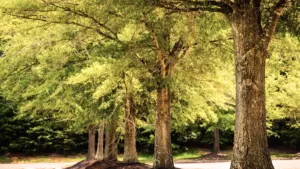


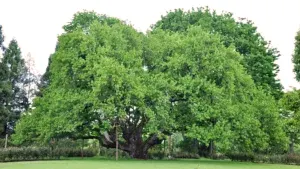

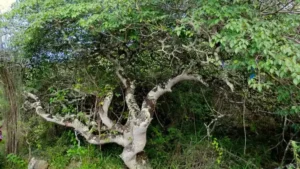
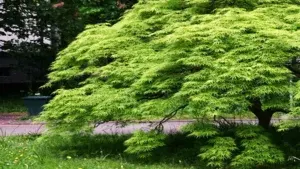
Leave your comment